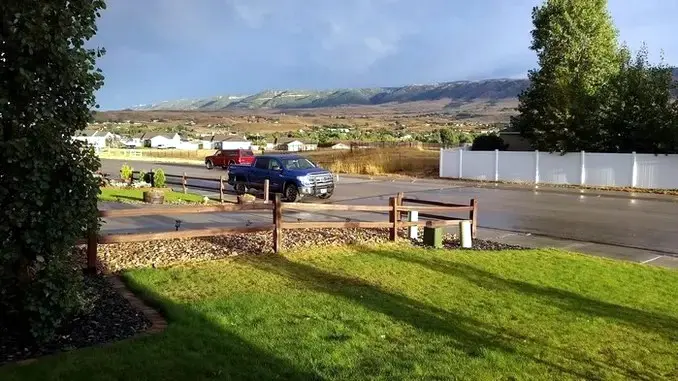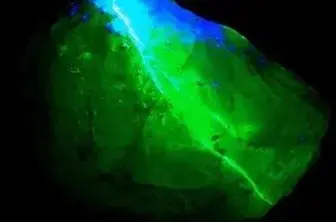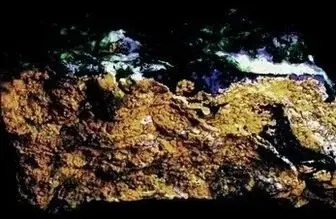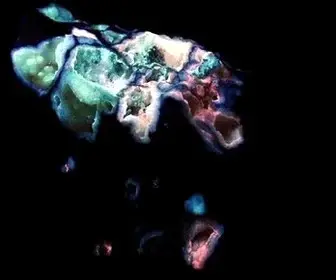Casper Mountain

- Casper Mountain Is Calling Me
The batteries are charged, it’s dark, and there’s a small pegmatite just 15 minutes away on Casper Mountain. It’s the perfect time to check out the new lamp, and I won’t be alone—my son is off work and wants to come along!
Lamp Light
At the pegmatite, this new 26-watt lamp is intense compared to my old 4-watt one. As our eyes adjust to the darkness, I can’t believe it! Bright, vibrant green and dull orange fluorescent rocks are everywhere.
Some translucent quartz contains a 3D matrix of illuminated fractures and fillings. Very unusual! Almost surreal. Is it kryptonite from outer space? It captivates both of us. Occasionally, there’s a flat rock with a bright, mottled orange-yellow glow. What is this stuff?


- Kryptonite And A Mystery?
Daylight

- Serpentine Outcrop
The next day, I examined that mystery rock and was shocked to discover that the orange stuff was a mixture of caliche and carbonate. But the rest? I hadn’t seen a rock like that in Wyoming. So it’s back up the mountain in the sunlight.
Walking over the hill from the pegmatite, I found an outcrop of this material. It turns out to be a highly altered, brecciated serpentine with veins, vugs, and carbonate and siliceous fillings. Neat!
Back for More
That night, my son and I return to the outcrop. The whole place glows with a subtlety and complexity not seen in the pegmatite.
Oranges, whites, creams, pinks, and greens swirl in various intensities and combinations. One can’t touch the ground without touching something fluorescent, and much of it is very interesting.
I’d never experienced collecting fluorescent rocks like this. The multiple glowing colors, hues, and intensities impressed me:
- Caliche glows in a mottled bright yellow-orange
- Calcite ranges from pastel white to blue, green, salmon, peach, and hot pink
- Bright green silicates fill fractures
- Intensities vary from bright to subtle
This variety is due to several convergent factors:
- The serpentine is highly altered
- It’s intruded by a pegmatite
- A portion of both the serpentine and the pegmatite are hydrothermally altered
Add some surface weathering, and you get much chemical variability. The best fluorescent material occurs in a weathered contact zone near the pegmatite.
This material exhibits a three-phase phosphorescence: the green and blue-white fluorescent materials phosphoresce together. After a minute, the green glow subsides, leaving a bluish-white glow that lingers for ten minutes or more, gradually fading to a dull yellow.

- Fluorescent Serpentine
A quick stop at the pegmatite yields albite with a dull cherry red glow and a few small quartz specimens with a yellow to rosy peach glow.
How lucky can I get in a single evening? And so close to home!
For me, collecting fluorescent rocks creates surprise and excitement. It hearkens back to my childhood, a time before fluorescent lights and today’s countless glowing devices.
Back then, a glowing rock was simply magical. All the best museums had fluorescent collections that rivaled the dinosaurs for popularity. Viewing them required waiting in line, as the dark viewing rooms were small. I often waited, sometimes more than once, to experience that magic.
Today, it’s just a quick drive up the mountain. No waiting, and I can stay as long as I want.
Even an old geologist like myself still feels the magic. Am I entering my second childhood? If so, maybe it’s not all bad.
Cheers, D 🪨🔥
7-22-04
